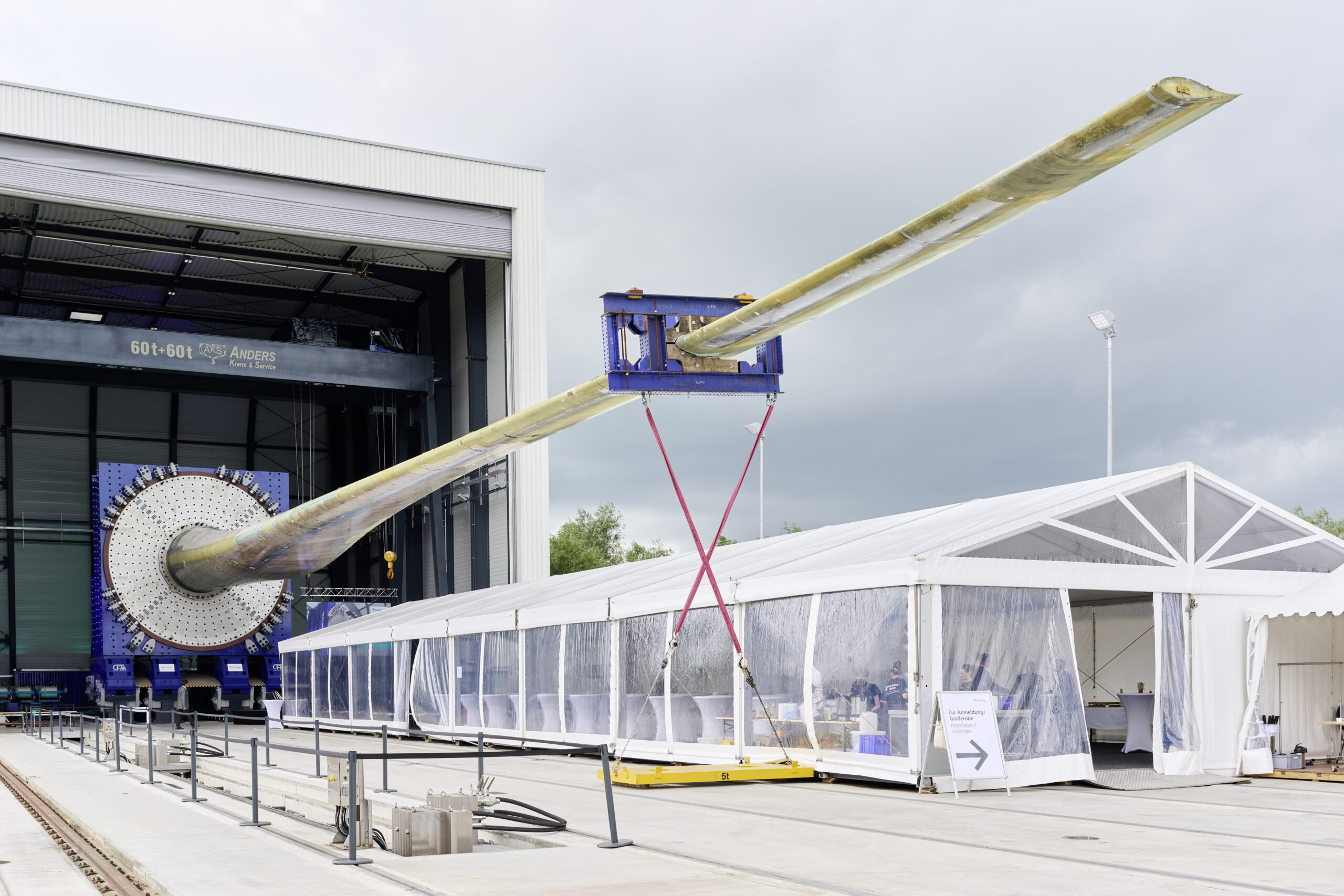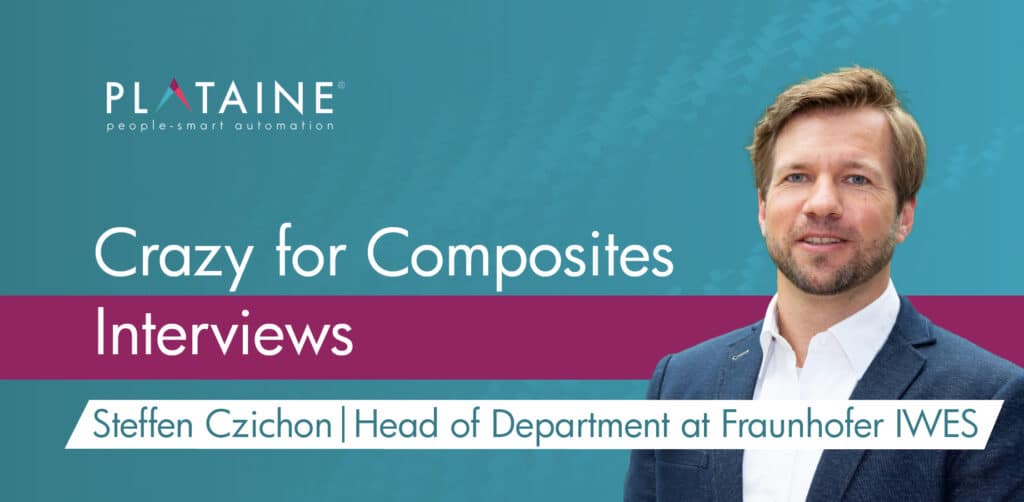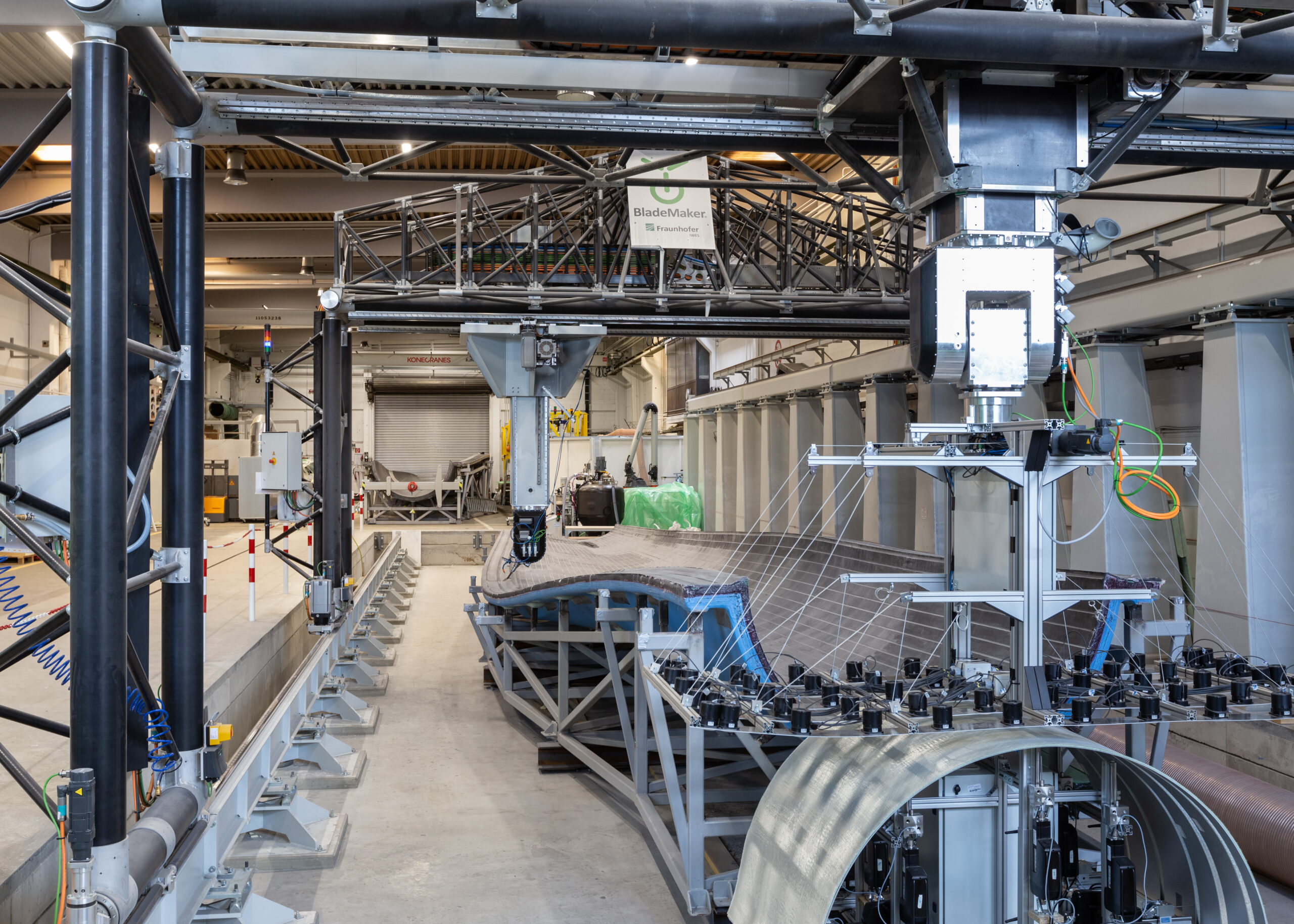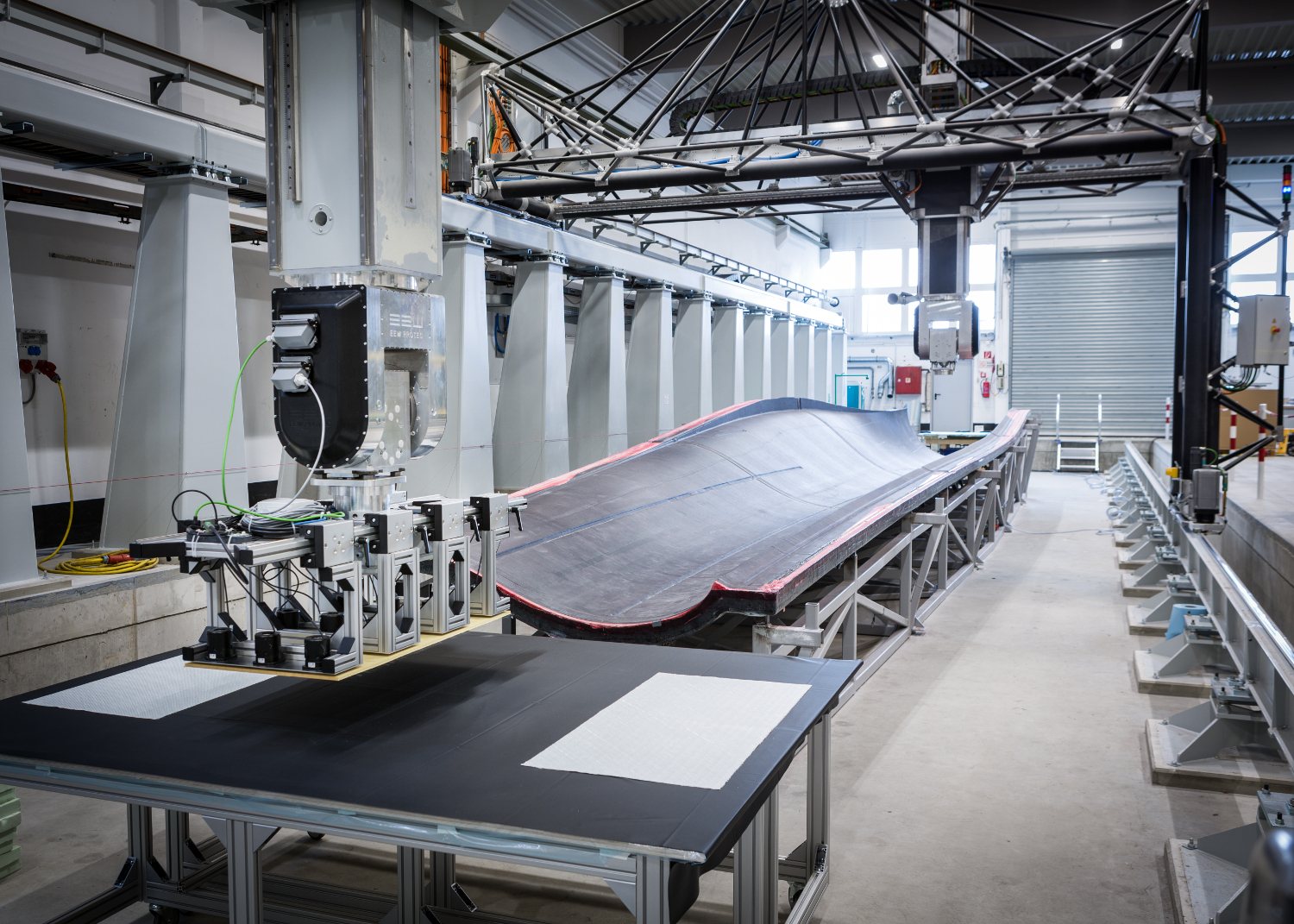My name is Steffen Czichon. I am currently Head of the Department of Rotor Blades at the Fraunhofer-Institute for Wind Energy Systems in Bremerhaven. I have been educated as a Computational Engineer, so I have a background in computational mechanics and composites materials. I’ve worked in the Aerospace industry for a couple of years and since 2017, I have been with Fraunhofer IWES.

In the Rotor Blades Department, we have four groups, and are working on various aspects of Wind Turbine blades, which are made from composites materials. We run an accredited material lab doing material qualification, focused on fatigue of composites materials, especially glass fiber, but also carbon fiber, sandwich materials, and bonding materials. We also do large component testing up to full scale blades. Our latest addition of our test infrastructure is for offshore blades – we can test blades up to 130-140 meters, and we just opened it up last week. We have a group currently working on numerical simulation of Wind turbine blades, i.e., Structural analysis, fine element modeling, and so on. And we have a fourth group that is working on manufacturing processes for Wind Blades in two areas: 1. Manufacturing wind blades for research projects. For instance, we include intentional defects and then investigate the effect of these defects on full scale blades. Also, we look at new materials to see how suitable they are to be used in the wind blades industry, because there are specific requirements. For Instance, you want to look at drapability of core materials, how easy it is to infuse the materials, what are the effects of exothermic peaks, curing process, and so on. 2. The other area we call automation and digitization. Automating the parts of a wind turbine, which is now manual labor, but also includes digitization by having good models of manufacturing processes, but also validating, and validating this with sensor data. One example would be the curing process where we model the curing kinetics. It is important to validate the models with temperature sensors that are distributed across the mold and maybe other sensors as well, such as resin arrival sensors.
©Jan Meier
What are your hobbies?
I have two kids, so the amount of time, which is my own and I can freely decide on, is limited. My kids are starting to become old enough for outdoor sports, so last week we went canoeing and I really liked it, of course, it was a glass fiber canoe.
What do you like the most about your job?
Interacting with people, actually. I think it’s not the first answer when you work in a technical field, but if I reflect on my job, those are the moments that are the most fun: standing next to a white board with a bunch of people discussing either technical or other problems and trying to come up with a solution.
What is the top challenge you face today?
There are three main challenges:
- The increasing size of Wind turbine blades – they are massively increasing in size. We passed the 100-meter mark and are continuing to grow. Our test bench comes up to 130-140 meters and the next blade, which is scheduled to arrive very soon is Vestas’ V236 – 15M with a blade length of 115.5 meters. You can imagine there are challenges arising from that if you look at how you test those blades, which becomes more challenging, but also materials, which are put to their maximum utilization. That means that everything along the process needs to be perfect. You need a very good material basis, very precise methods, and you really need to understand the effects of certain defects on the blade. That’s one of the main challenges; increasing size and how much pressure we are putting on the structural component.
- Automation in Wind turbine blades – we have suggestions and ideas for technical improvements, but with the rate that wind turbine models are changed, it is very difficult for OEMs to invest in equipment for automation, simply because the payback time must be very short. It is difficult to have a high degree of automation, and this, for us, is one of the challenges; to find clever solutions that drive automation, but at the same time do not limit the size of the blade growth.
Blademaker ©Jan Meier
3. Circularity of materials. Sustainability is not the right word – even if you have a Wind Turbine blade that is completely put into the landfill. it is still a very sustainable idea to build a Wind turbine blade. However, if you just look at the wind turbine blade itself, there is a chase to achieve fully circular blades at some point. It will take many years, since it’s not that easy, but this is the ultimate vision.
What will be your tip for other manufacturers for digital transformation?
With our BladeMaker facility, we provide an area where anyone can test out the benefits of various aspects of digitization. This is an open invitation to OEMS and other partners from the wind industry to use our facilities, that are open for usage, to test new technologies, before you make the decision and implement them into your facilities.
Is circularity part of your agenda?
Yes, absolutely – it’s a three-step challenge:
- What do we do with wind blades that are already out in the field?
The legacy blades that have been built, what is the best way to recycle those? It’s not a fully circular solution, but it still makes sense to further investigate what is the best way of doing that. - How can we build wind blades that will be easier for recycling and are designed for recycling? A lot of approaches have been taken and adopted by the industry – Siemens Recyclable Blade, LM Windpower with the Zebra project, or Vestas, they all provide solutions that are easier to recycle.
- The caveat is that building blades that are easier to recycle, it’s not a recycling solution, I always compare it to your coffee cup, and it says: ‘this is compostable’ that doesn’t help you if you put it in a trash and then it’s burned. It does help you, however, if you separate it and put it in your compost bin. How does it work for a blade? You have a 100-meter plus blade, what do you do with it? How far do you shred it, where is the economic value chain, and what is the business model behind it? All these things must be developed, and this will be a challenge for the years to come. Hopefully, this will lead to a fully circular wind blade economy.
If you weren’t the Head of Rotor blade Department at Fraunhofer IWES, what would you be doing?
Spending a lot of time outdoors, hiking somewhere, and maybe canoeing. More outdoors, definitely.
on the latest interviews







